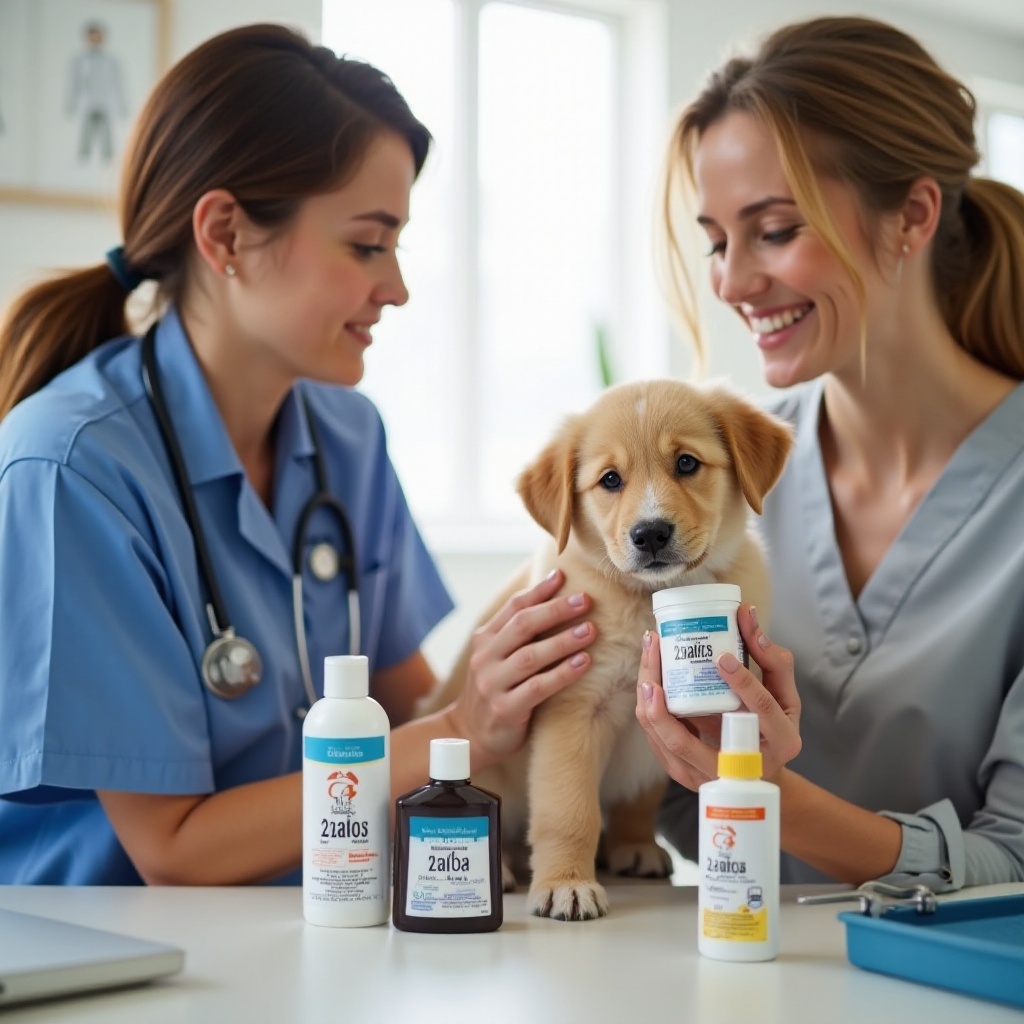Introduction
Fleas can be more than just an itchy annoyance for puppies. They pose various health risks, which can even be life-threatening. Therefore, effective flea prevention is essential to safeguard your puppy’s health and wellbeing.
In this guide, we will delve into the importance of flea prevention, understanding flea lifecycles, key factors in choosing prevention methods, and the best flea prevention methods available. We’ll also cover tips for effective flea prevention and answer frequently asked questions.

The Importance of Flea Prevention for Puppies
Proper flea prevention for puppies is crucial. Flea bites can cause discomfort, allergic reactions, and skin infections. Moreover, fleas are carriers of tapeworms and other diseases that can seriously harm your puppy.
In the early stages of a puppy’s life, their immune system is still developing. Thus, the impact of a flea infestation can be greater on them compared to adult dogs. This makes it vital to implement preventive measures from an early age. By doing so, you protect your puppy and give them a healthier start to life.

Understanding Flea Lifecycles and Risks
A comprehensive flea prevention strategy requires understanding the flea lifecycle. Fleas go through four stages: egg, larva, pupa, and adult. The entire cycle can be completed in a matter of weeks under favorable conditions, leading to rapid infestations.
- Flea Eggs: Female fleas lay eggs that fall off your pet into the environment, spreading throughout your home.
- Flea Larvae: These tiny, worm-like creatures avoid light and feed on organic matter.
- Flea Pupae: At this stage, fleas form a protective cocoon. They can lie dormant for months, making them hard to eradicate.
- Adult Fleas: They live on your puppy and feed on their blood. One adult flea can lay numerous eggs, perpetuating the cycle.
Understanding this cycle facilitates a comprehensive approach that targets all stages, not just adult fleas, ensuring effective control and prevention of infestations.
Key Factors to Consider in Flea Prevention
When deciding on a flea prevention strategy, several factors should be taken into account to ensure it is effective and safe for your puppy.
- Puppy’s Age and Weight: Some products are suitable for older puppies, while others are safe for very young puppies. Be sure to choose a product appropriate for your puppy’s specific age and weight.
- Health Status: If your puppy has any health issues or is on medication, these could affect the suitability of some flea treatments. Always check with your vet before starting any new treatment.
- Environmental Factors: Consider your puppy’s lifestyle. Do they primarily stay indoors, or are they frequently playing outside? This can influence the type and frequency of prevention methods.
- Product Efficacy: Research and review the effectiveness of various products. Some products work faster or for longer durations than others.
By considering these factors, you can better tailor a flea prevention strategy that effectively meets your puppy’s specific needs.
Top Flea Prevention Methods for Puppies
To effectively protect your puppy from fleas, you need to select the most suitable flea prevention method. Below are the most commonly used methods along with their pros and cons.
Topical Treatments: Pros and Cons
Topical treatments are applied directly to your puppy’s skin, usually at the back of the neck.
Pros:
* Highly effective and works quickly.
* Long-lasting, usually around a month’s protection.
* Easy to apply.
Cons:
* Can irritate the skin if not applied correctly.
* Puppies might lick the treatment off.
* Some puppies might be allergic to it.
Oral Medications: Pros and Cons
Oral medications come in the form of chewable tablets that kill fleas.
Pros:
* Effective and fast-acting.
* No risk of washing off like topicals.
* Comes in flavors to make them easier to administer.
Cons:
* May cause gastrointestinal upset in some puppies.
* Require a prescription from your vet.
* Some products only kill adult fleas.
Flea Collars: Pros and Cons
Flea collars are worn around the puppy’s neck, releasing active ingredients over time to kill fleas.
Pros:
* Provides long-lasting protection.
* Easy to use.
* Some collars offer combined protection for fleas and ticks.
Cons:
* Can cause skin irritation.
* May not be suitable for water-loving puppies.
* Puppies might chew on the collar.
Natural Remedies: Pros and Cons
Natural remedies include essential oils, herbal shampoos, and other non-chemical methods.
Pros:
* Generally safe for younger puppies.
* Less likely to cause allergic reactions.
* Can be part of a holistic approach.
Cons:
* Often less effective than chemical treatments.
* Require frequent reapplication.
* Limited scientific evidence supporting their efficacy.
How to Choose the Best Flea Prevention Product
Choosing the best flea prevention product for your puppy involves careful consideration of several factors:
Considering Your Puppy’s Age and Health
Your puppy’s age and health are critical when choosing a flea prevention method. For example, some products are not suitable for puppies under 8 weeks old. Always consult the product guidelines and your vet for advice tailored to your puppy’s specific needs.
Lifestyle and Environmental Factors
Consider where your puppy spends most of their time. If your puppy is mostly indoors, a mild prevention method might be sufficient. Conversely, if they enjoy outdoor adventures, you may need a more robust strategy.
Consultation with Your Veterinarian
Your vet is an invaluable resource. Consulting them ensures that you choose the most effective and safe flea prevention product for your puppy. They can provide insights on the latest flea prevention products and tailor their recommendations to your pet’s needs.

Tips for Effective Flea Prevention
For the best results, integrate multiple strategies to prevent fleas. Here are some practical tips:
Regular Grooming and Inspections
- Brush your puppy daily to check for fleas or flea dirt.
- Bathe your puppy regularly with a puppy-safe shampoo.
- Inspect your puppy’s sleeping areas frequently for signs of fleas.
Home and Yard Maintenance
- Vacuum regularly to remove flea eggs and larvae from carpets and furniture.
- Wash bedding, toys, and other items your puppy frequently uses in hot water.
- Treat outdoor areas such as lawns and gardens where your puppy plays.
Seasonal Considerations
Fleas are more active in warmer months. Increase the frequency of prevention measures during spring and summer to prevent infestations.
Conclusion
Protecting your puppy from fleas is vital for their health and comfort. By understanding flea lifecycles, considering key factors, and choosing the right prevention method, you can effectively keep your puppy flea-free. Regular grooming, home maintenance, and seasonal adjustments further aid in this effort. Always consult your vet to ensure that the flea prevention strategy you employ is both effective and safe.
Frequently Asked Questions
What is the safest flea prevention for puppies?
The safest flea prevention depends on your puppy’s age and health. Generally, products like flea collars, oral medications, and topical treatments are safe with proper use after consulting with your vet.
How often should I apply flea prevention to my puppy?
The frequency of application depends on the type of treatment. Topical treatments are usually applied monthly, while oral medications can vary from a few weeks to monthly. Always follow the product’s instructions and consult your vet for guidance.
Can natural remedies be as effective as chemical treatments?
While natural remedies are safer for young puppies and less likely to cause allergic reactions, they are often less effective. Natural methods may require more frequent application and do not have as much scientific backing as chemical treatments.
